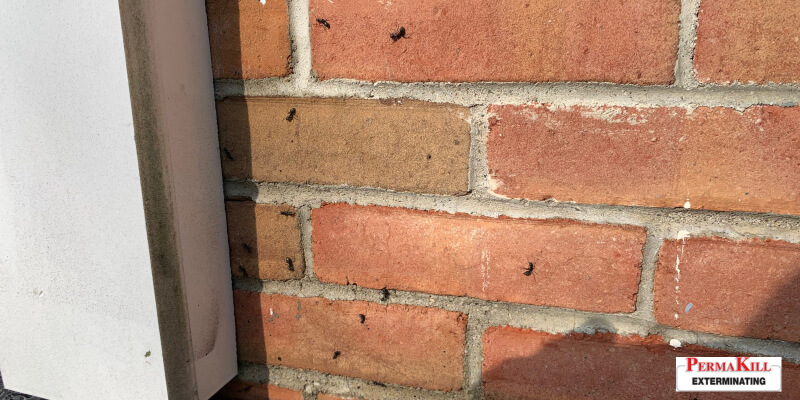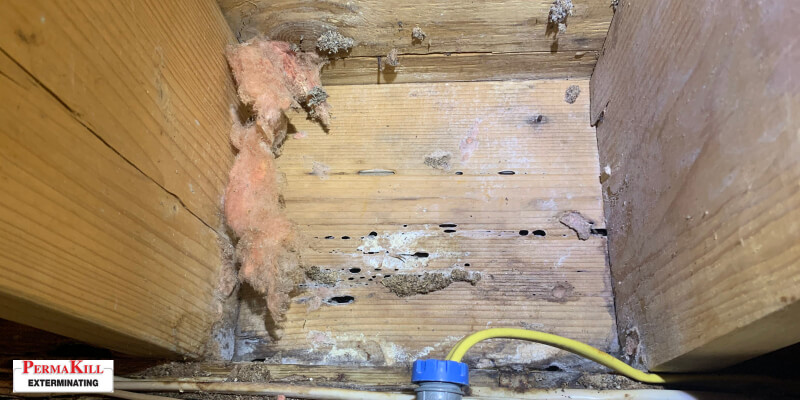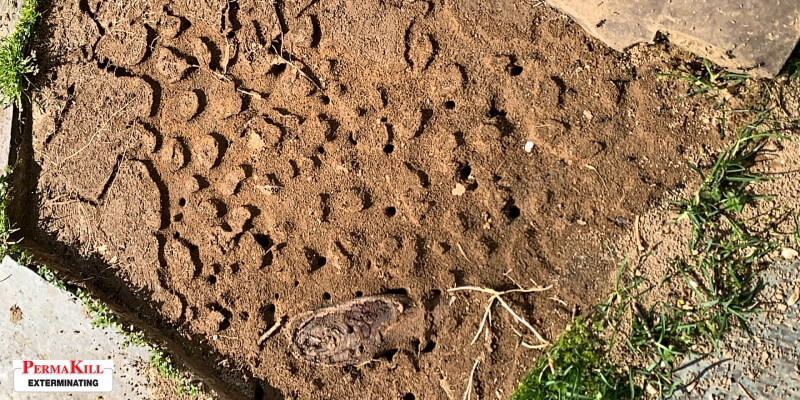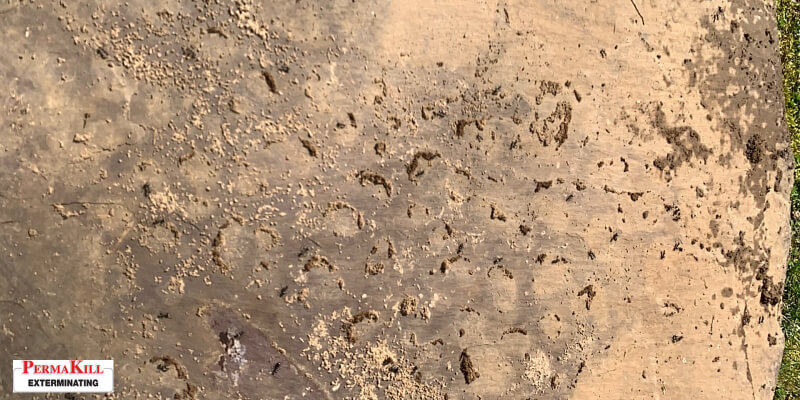


Ants are generally harmless to humans so the sight of large ants roaming around your home may not bother you so much. Carpenter ants are among the largest in the United States and they can measure up to 20 millimeters. They live both indoors and outdoors which makes eliminating them a tricky business. While the ants may not harm you physically, they may bring serious damage to your home so you have no choice but to eliminate them.
So what should you know about carpenter ants, homemade ant baits, and repellents? There are various ways to get rid of carpenter ants. Spraying pesticides is not enough to fix ant invasion because you have to kill not just the ants you see roaming around but also the nests and colonies that lurk beneath. This means using baits as ant killer, either commercial ones or homemade ones. Using granular bait and other insecticides is the best method if you're looking for the quickest result, but if you can afford to wait and would rather use a non-toxic ant trap, then using homemade ant bait such as Borax ant killer and Boric acid, is perfectly all right.
Before everything else, it's important to know how letting your ant problem go unchecked can have serious repercussions on your property. The damage they inflict on wood is somewhat lesser compared to a termite's. But unlike termites, carpenter ants do not eat wood. They hollow it out so they can build their nests within. These ants seek moist and decaying wood to build their nests.
Once they have chosen their spots, they excavate large, elongated tunnels which are called galleries. Locations that they usually target include water-damaged bathroom walls and spots under leaky pipes. Compared to the galleries built by termites (which are rough and lined with excrement), galleries of carpenter ants are smooth and debris-free, just like sanded wood. The telltale sign of their existence is the piles of sawdust that you will see near their galleries and nests.
Since carpenter ants don’t consume food, they have to do something about the wood waste they gathered when building their nests. These wastes are sawdust called “frass,” gets pushed out of the holes they made and accumulates on the walls and floors. When this happens, it’s an alert for the owner of the property that there’s a potential ant problem. A professional pest control person is often called in to deal with the problem.
But when frass is deposited in a location where it’s not so visible or the sawdust just blends in with the environment, the owner won’t be aware of the threat until it goes on and the result is damage that looks like the ones done by termites.
Carpenter ants prefer to feed on rotting timbers or softwood, but they can also the same to sound wood. When this happens, they can weaken support beams which cause the property’s structure to warp, damage which is similar to a termite’s. Identifying carpenter ant damage is usually easier than looking for the ones done by subterranean termites because of the following:
Left unchecked, the colonies will eventually mature as years go by and cause extensive damage to your home's foundation. The queen can live up to 25 years, so imagine how costly an ant problem can be to a homeowner like you.
There are over 200 species of carpenter ants, varying in appearance and regions where they can be found. This can make identifying them quite tricky, especially since most of them share common physical features. Here are some characteristics to look for in order to distinguish them from other ants:

Because carpenter ants love lumber so much, they are often mistaken for termites. You can easily identify termites if you take a closer look. Their bodies are creamy white in color, with wings of equal length, undivided waist, and straight antennae. They behave like vampires in the sense that they hate the light, which is why they rarely leave their nests. Unlike carpenter ants, wood is the main source of fuel for termites. They use their saliva and fecal matter along with mud to build tunnels to their homes. These tunnels are usually seen near a property’s foundation.
You need to find where these ants are nesting in order to start working on eliminating them. They build their nests in rotting wood, although this may vary depending on the kind of colony. Carpenter ant nests are classified into two categories:

Tracking down their nest is the first step in abolishing your carpenter ant problem. You need to find them before you build your DIY ant trap. You can do this in several ways:
Carpenter ants are not so particular about where they live. Understanding the ant varieties specific to your area can help greatly in identifying which ones you’re dealing with.

Using homemade ant trap is a comfortable choice if you have pets at home or the thought of using anything with poison seems unsettling for you. Fortunately, there are lots of homemade baits you can use to eliminate the carpenter ants in an environmentally friendly manner. Here are non-toxic, DIY ant killer methods to eliminate those hidden and foraging ants in your home.
If the carpenter ant nest is located outdoors, you can attack the ant colony directly simply by pouring boiling water directly on it. Just boil a few liters of water and handle it with care to avoid scalding and other nasty accidents. You can also add soap, essential oils, or a natural and water-soluble insecticide to the hot water to make this more effective. You may have to do this several times in order to completely kill the colony.
Mix one part natural dish soap to two parts water and put the liquid in a spray bottle. Use as needed liberally to eliminate the pheromone trails and kill the ants. Soap can be toxic enough for insects. Keep spraying as often as possible until there are no more ants left.
Carpenter ants leave pheromone trails to communicate with each other and navigate their way, especially when they are foraging for food. Essential oils can remove the scent of these trails and disorient the ants. Try using peppermint oil, lemongrass, lemon, orange, and tea tree oils for this purpose. Just put a few drops of the oil on a cotton ball or kitchen towel and wipe it on potential entry points of the ants and their usual pathways, such as door frames, countertops, baseboards, and windowsills. You can also dilute your oil with a carrier oil to make a natural ant spray.
Another simple natural ant repellent is a mixture of equal parts baking soda and powdered sugar. Pour the liquid into a shallow dish and place it in spots with the most ant traffic. You can also put this outside, especially near windows and doors. Ants love sweets and they will surely get lured by the sugar. The chemical content in baking soda will kill ants.
Diatomaceous Earth is made of crushed algae fossils and considered as a popular natural pesticide. It's a poison and kills ants and other bugs by absorbing the oils in their skeletons, therefore drying them out. Its abrasive material also damages the exoskeleton of ants, which kills them eventually. You can easily buy Diatomaceous Earth in plant stores and you simply spread it directly on the ant nest or throughout ant problem areas. Carpenter ants regularly die from consuming this natural pesticide.
Vinegar is another natural ant killer that disrupts the ants' pheromone trails. Just mix a one-to-one ratio of vinegar and water and apply to areas using a spray bottle. You can use either white or apple cider vinegar. Spread liberally directly on the nest or along door frames, windowsills, baseboards, and countertops. Repeat as often as needed. Since vinegar is a natural disinfectant and a multi-purpose cleaner, you can use this as much as you want.
You can use cornstarch to smother a large group of ants. Spread the powder liberally over them and add water on top. It's messy, but this is surely effective in repelling ants. You can also vacuum the ants after spreading cornstarch instead of pouring water over them.
This also acts as a deterrent for the ants' pheromone trails. Just dispense the powder or oil generously directly on the nest and other problem areas such as windowsills, baseboards, near doors, and alongside countertops. In place of powder cinnamon, you can use cayenne pepper as well.
Don't throw your used coffee grounds. Aside from being a natural fertilizer, this can be used as a natural ant repellent. Just sprinkle the grounds on paper and other disposable surfaces and then place them near areas that attract ants. Make sure to change this often because grounds will become less effective when it dries up.
Learn more: How to Kill Ants Using Natural Ant Bait and Other Non-toxic Methods

There’s simply no consolation when you have ants residing in your home. Prompt action is essential when you discover ants invading and disrupting your property, which can affect your family. In order to prevent and eliminate ants in your house and yard, you need to do the following:
Here is Everything You Need to Know About Carpenter Ant Bait.
You're not limited to using borax bait, commercial or homemade when it comes to killing carpenter ants. Since carpenter ants do not dwell on sound and solid wood, you can deal with your ant problem by making your home less vulnerable to conditions that attract these pests. Here are several ways to prevent ant hill and carpenter ant invasions from happening again:
If your ant problem has become too much for you to handle and your homemade ant killer is just not cutting it, let the professionals step in to do the job. If you’re in New Jersey and nearby areas, PermaKill Exterminating is the one to call for your ant infestation problem. We eliminate all types of ants, including the fire ant, the pharaoh ant, the pavement ant, the odorous house ant, Argentine ants, and many more.
This family-owned pest control company offers control and extermination for lots of insect types, mice and rodents, and squirrels. Your search for the right exterminator in New Jersey ends today. Call PermaKill Exterminating and make your home ant-free.